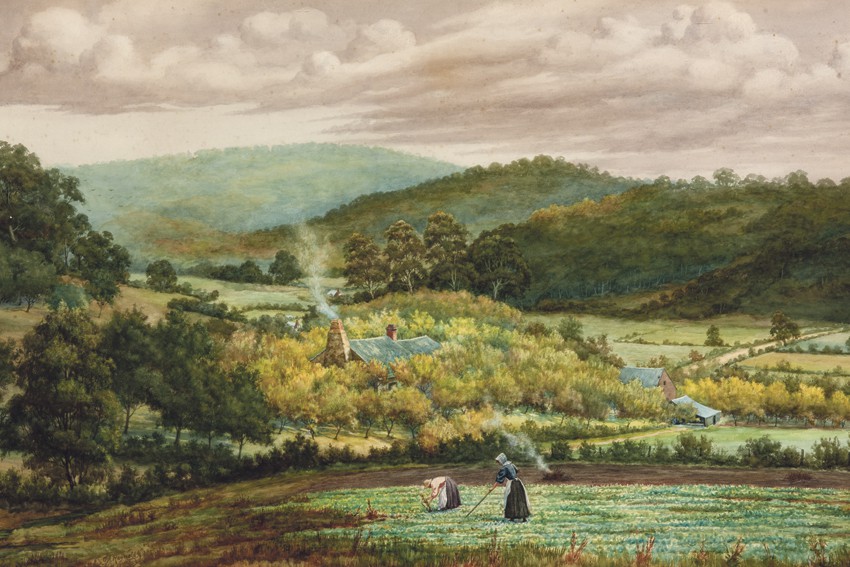Endangered species

In case you hadn’t noticed, it’s Australian Year of the Farmer. It’s also the National Year of Reading.
The fact that 2012 houses the Year of the Farmer and the Year of Reading confirms the suspicions (of this former book publisher turned urban and rural planner) that the allocation of national years of focus must relate directly to the endangered status of the subject at hand. That we are celebrating two years in the same year adds a sense of urgency to the said agendas, as they evidently couldn’t wait their respective turns.
Focusing on the farmer, there seem to be numerous conversations around town that are encouraging us city dwellers to pause for a moment to consider the contributions of our country cousins. A recent debate staged at RiAus contemplated whether ‘Australian cities need Australian farmers’ -– a question which is suddenly under the spotlight in an intense, often xenophobic national debate surrounding foreign investment in Australian farms.
Arguing for the affirmative landscape futurist Professor Wayne Meyer of the University of Adelaide dismissed the assertion that city dwellers don’t care about provenance. “Knowing where our food and water is coming from is becoming increasingly important,” he claimed. And, as the real costs of energy and transport escalate, the closer the better: “Locally derived, quality assured, ethically and sustainably produced food is important and increasingly in demand,” he added.
These themes were taken up at a subsequent gathering of soil scientists at the National Wine Centre, which highlighted the value of soils to the agricultural landscapes around Adelaide, and reinforced the notion that fertile land is a precious and finite resource that should be protected from urban development. Dr Annie O’Neill, senior lecturer in soil science at the University of Adelaide, told the symposium that soils underpin the economic value of those landscapes. “The wine industry, broadacre cropping, horticulture; all of those things are what South Australia is famous for, not just from an industry point of view but from a tourism point of view, too,” she said. At the same event independent soil consultant James Hall identified the state’s top five areas with terroir worth protecting as the Barossa, McLaren Vale, Adelaide Hills around Lenswood, the Northern Adelaide Plains, and the lower North around Freeling, Roseworthy and Kapunda.
Unsurprisingly, this selection mirrors much of the geographic region being put forward by agricultural economist Professor Randy Stringer, as a possible site for World Heritage listing. Professor Stringer entertained his ideas about pursuing a UNESCO bid for the agrarian landscapes of the Mount Lofty Ranges at the recent Regional Development Australia ‘Big Issues, Big Opportunities’ state conference held in the Barossa. He told the audience that the Character Preservation legislation being developed for the Barossa and McLaren Vale will not necessarily make farms profitable, or protect those landscapes into the future. According to Stringer, evidence from around the world demonstrates land use policy can only mitigate negative pressures: “What it fails to do is provide a context that can inspire and energise agri-food businesses to keep them economically viable,” he argued. “World Heritage listing has evolved into a globally recognised brand that would stimulate the food, wine and tourism economy of this region in ways that land use regulations could never do,” he added, citing potential economic impacts of up to $300 million on the state’s GRP, and a potential 3000 new jobs in the agriculture, wine and tourism industries.
Much of the current discussion around the role of farmers and agriculture points to the intangible contributions that farmers make to city folk, as long-term custodians of distinctive regional landscapes, and as managers of the associated natural resources. These conversations reflect a resurgent interest in regional-scale governance, necessitated by the effects of climate change, water security, food security and peak oil projections. There is also growing urban population support for a nearby agriculture, viticulture, horticulture and tourism driven economy. At stake are valued landscape attributes that define a region and contribute to its economic viability, quality of life, and ecological sustainability.
Appreciation of how agricultural landscapes can be integral to a community’s sense of identity and wellbeing is coinciding with recognition that the economic building blocks of the global economy are indeed regions, rather than nations, states or cities. As we contemplate the future of agriculture and the role of farmers into that future, ongoing dialogue between the planning profession and regional policy makers must keep posing the question ‘Do we have adequate planning paradigms and conceptual frameworks to safeguard the landscape values that are at risk?’
New lobby group for farmers
Former Premier Rob Kerin has unveiled a new structure for farmer representation at the state level, as the South Australian Farmers Federation faces a membership crisis. The proposed Primary Producers’ Council would be commodity-driven rather than regionally focused. It would likely be funded through industry levies, and would deal with cross-commodity issues like natural resource management and water policy, while industry associations would continue to have autonomy on individual commodity issues. National bodies will be watching the initiative closely. “There’s no doubt farmer representation across Australia has run into trouble,” Mr Kerin told The Adelaide Review. “A strong, viable, united and well-resourced body is needed to speak for all primary producers.”
Image: George A. Reynolds, Australia, 1854 ‑ 1939
The Valley of Uraidla,1898, Adelaide
watercolour on paper, 63.5 x 110.5 cm
South Australian Government Grant 1984
Art Gallery of South Australia